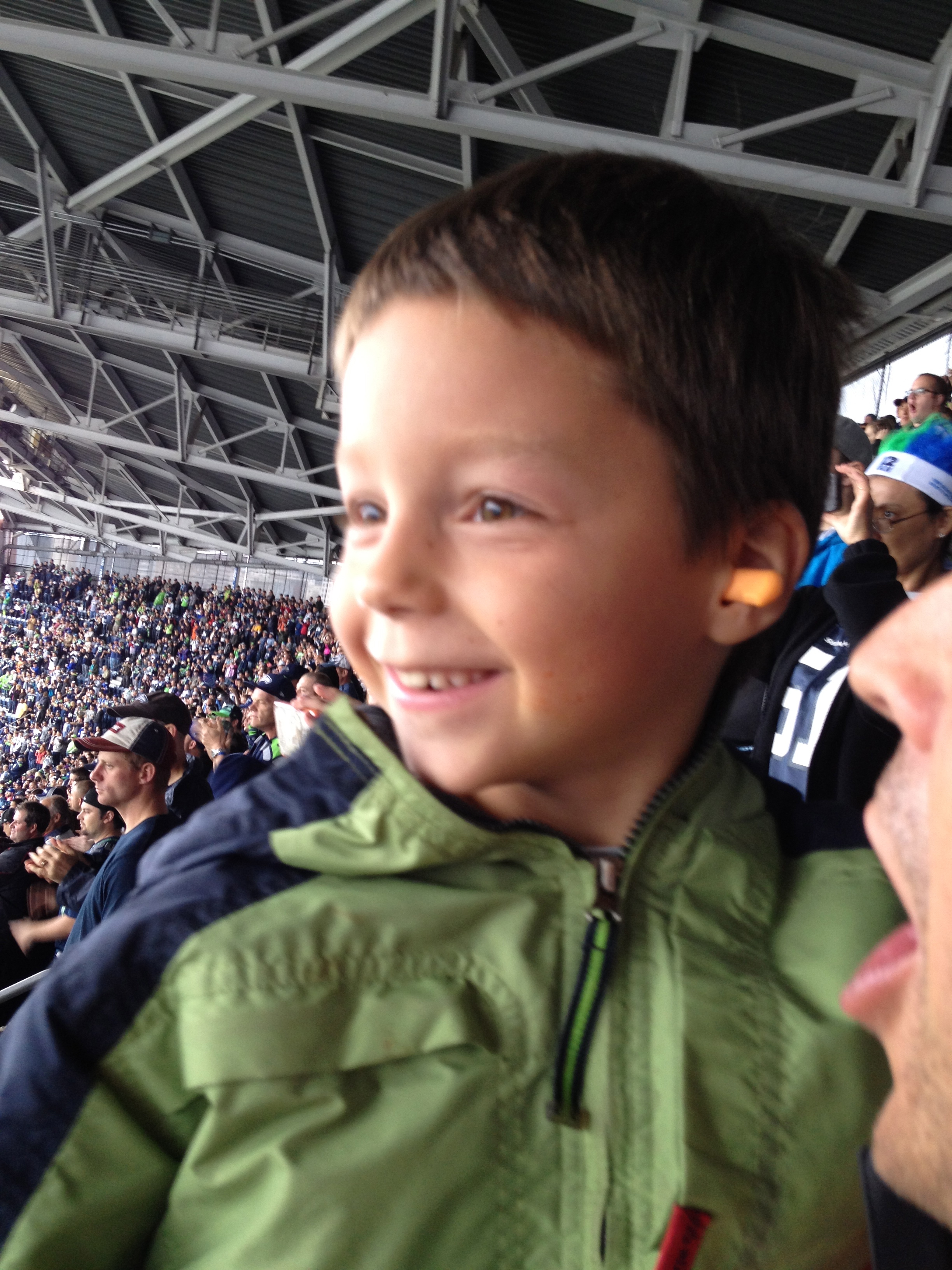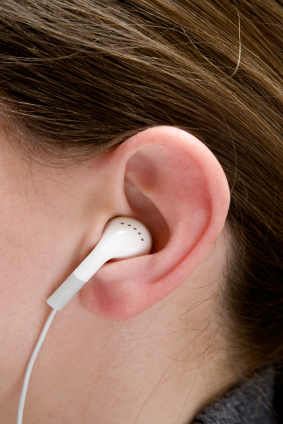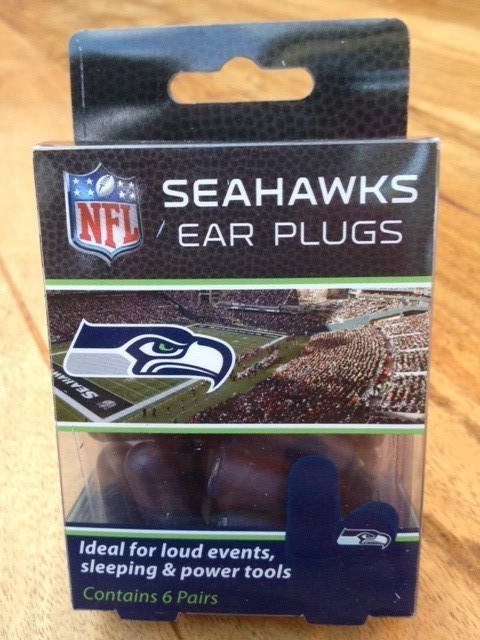 When the Seattle Seahawks take the field for home games, fans wear their "12" shirts, they paint their faces, and if they care about hearing future games and not just seeing them, they're packing their plugs.
When the Seattle Seahawks take the field for home games, fans wear their "12" shirts, they paint their faces, and if they care about hearing future games and not just seeing them, they're packing their plugs.
It's loud here, louder than anywhere else in the NFL, something that didn't phase Seattle native Todd Morgan, who grew up going to ear-splitting games at the Kingdome. But when he and his wife Wendy had a baby, a little boy who became a junior member of the 12th Man, the Morgans knew the kid needed protection from the noise. So in addition to infant-sized Seahawks gear, they invested in headsets to protect 6-month-old Oliver's ears.
"If you took the headphones off, he was miserable," says Morgan. "Besides, you always take better care of your kids than yourself."
This September's Seattle vs. San Francisco game at CenturyLink Field, with sound levels reaching 136.6 decibels, matched the noise of jet engine taking off nearby.
The potential impact of such noise on fans is raising eyebrows with experts working to combat hearing loss and an often-related condition called tinnitus, characterized as a ringing or buzzing in the ear.
"They won the game that day against the 49ers, but guaranteed many of their fans (and rivals) lost something too," wrote Jennifer Born in a newsletter for The American Tinnitus Association based in Portland, Oregon where she serves as Director of Advocacy and Research. "I wouldn't be surprised if many of them left with either temporary or permanent tinnitus as a result of achieving this goal. A simple thing that could have been done would have been to hand out earplugs to every fan."
Damage down the road
Like many young adults, Bonn considers herself an avid sports and music fan. But she advocates for hearing loss prevention because she is living proof that mistakes made young aren't always outgrown.
As a 15-year-old standing in front of a stack of speakers at an Oasis concert, Bonn's ears were clogged and rang for three days afterward. Now, nearly two decades later, she still suffers from intermittent tinnitus. "It used to be thought of us as an older person's condition, now younger and younger kids are suffering from it," says Bonn.
It's a loud world we live in now, with action-packed video games, surround-sound at home and in movie theaters, leaf blowers and heavy traffic.
What's tricky about noise-induced hearing loss, and part of the reason an estimated one in five adolescents suffer from it, according to the National Institutes of Health, is that it can happen gradually. A person cannot necessarily feel it happening, and it is cumulative. Once the stereocilia, or small hair cells in the ear are damaged they do not regenerate. Practically speaking, noise induced hearing loss is permanent. Tinnitus can be too, with hearing damage the leading cause of the condition.
According to the Centers for Disease Control's Noise Meter, children should have no more than 15 minutes of unprotected exposure to sounds that are 100 decibels or above. That is roughly the sound of a hand drill or a subway in a big city. Regular exposure to sounds at 110 decibels, say, a chainsaw, for more than one minute, risks permanent hearing loss.
For teens today: A silent epidemic

Nowadays, some kids' and teens' personal listening devices can get as high as that 110 decibels. According to a study in the Journal of the American Medical Association in 2010, "mild hearing loss in young children can impair speech and language development and lead to decreased educational achievement and impaired social-emotional development." Listening to loud music through ear buds is likely the main reason that more adolescents are losing some of their hearing, study authors found.
But as Jay Rubinstein, a professor and director of the Virginia Merrill Bloedel Hearing Research Center in Seattle points out, "There's a difference between those devices and music on MP3 players and phones now, because the length of duration they will play is much longer, allowing teens to expose themselves to loud noise uninterrupted for perhaps eight hours at a time." There is no more flipping the cassette tape over or AA batteries running out. Many of us felt pretty cool back in the day with our mustard-yellow Sony Walkman or Discman players. From time to time we probably listened to our Aerosmith a little too loudly.
Protect and prevent
A company called Etymotic Research makes a product called Ety-Kids, earbuds that replace the standard ones that come with the MP3 player or phone. Kids can listen to music or video games with high-definition sound, but the buds prevent sound from reaching dangerous levels. Even when your child's device is cranked up to maximum volume, these buds will not produce more than 88 decibels, which experts say is safe for four hours of daily exposure.

Remember, it's not just rock music that is a problem. Rubinstein says marching-band members with brass instruments blaring nearby and orchestra students can be at the highest risk for hearing loss. In fact, with classical music, there can be a huge dynamic range. "While the ear has protective mechanisms to protect itself, that takes a little while to kick in, so when there are abrupt musical changes, it's worse than in rock and roll," he says.
Tom Bergman, owner of the online Ear Plug Superstore and a former teacher, knows that getting kids and especially teens to actually use them is an uphill battle. "Nobody who is using them wants them. The only reason is because they're being forced to wear them and honestly how many battles to parents want to fight?"
When you are less concerned about hearing high quality music and are just trying to block the noise of an event, earmuffs for younger kids are a good option. With their zebra stripes and neon colors, they are now more kid-friendly than they used to be. They run anywhere from $10 to $40 and up. For sporting events, concerts and others, noise-blocking headsets or foam earplugs can reduce the sound by as much as 30 decibels.
ParentMap TV Editor Hilary Benson blogs about the prevalence and prevention of youth sports injuries at www.playitsafesports.com.











